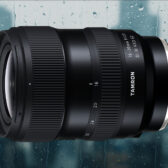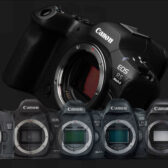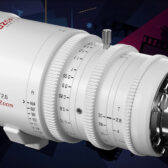Patent Madness
This is why patents drive me crazy, I need to hire a technical interpreter.
Explanation
The main point in the patent is the hybrid viewfinder (108,132,154 and 179). Neither the beamsplitter/pellice (182) display (185), nor IS, GPS, Wireless, RGB Flash, are important in this patent.
A simple version of this hybrid viewfinder can be included in a consumer camera. And this is already coverd by claim 1 of the patent. Everything else is a goodie or, more likely, a red herring.
Fig. 17 does show a hybrid viewfinder without the pellicle. But the same brightness adjustment as the Fig.3 viewfinder.
All claims of the patent reference the hybrid viewfinder of claim 1.
So a camera with a pellicle, GPS, built-in printer, Wireless, a LED RGB flash-unit, remote-controll of cameras, Sensor IS WITHOUT the hybrid viewfinder is not covered by this patent.
Seeing that there are several implementations of the hybrid viewfinder shown in the patent, it is clear that they already experimented a lot with its implementation. Also the shown automatic brightness adjustment (156 in Fig.3) shows that this is already somewhat matured. I suspect that this is to be built in one of the next models.
They also have a means of showing live view through the finder while still using the phase detect AF sensor.
This is not at all covered by the patent and actually this would require a beamsplitter between the lens and the sensor. This is not even mentioned in the patent maybe I should patent this myself :-)
thanks HRB
|
When you purchase through links on our site, we may earn an affiliate commission. Here's how it works. |









Of note, there are separate patent applications existing from Canon for phase-detect AF on the sensor itself. I’ve not taken the time to see if they’re directly referenced those from this one.
Yes, patent applications can be extremely difficult to read, some inventors are better than others at explaining a invention, and some individuals are very prolific at inventing useful things.
Before I retired, part of my job was to evaluate invention disclosures (Preliminary patents) that fell in my area of expertise, and make recommendations about the likelyhood that either our company would use them, or that someone else would license the patent. I had the advantage of being able to discuss the invention with the inventor.
If they were approved to proceed with a patent application, then a professional technical writer and patent attorneys worked with the inventor to make sure the language covered all the invention.
I’ve seen some pretty incredible patent applications, like a invisibility cloaking device. Lots of work is going on in that area, but the details are secret.
I just read this post ”Patent Explained Take 2 :) ”, and ……… Que??
So it’s an all-in-one version of this earlier patent filed:
http://www.canonrumors.com/2010/01/new-canon-patent-finds/
I am NO patent specialist but a quick and dirty scan of the PDF lets me think about the following:
=> CORE: Canon will show both, a direct viewfinder image and the calculated image (like a live view image) simultanously. The calculated image give a hint about exposure (and compensation and white balance and …) work.
=> APPLICATION of GPS and TV with the additional viewfinder monitor: GPS and TV mean that a photographer has additional information. GPS for paparazzi, TV for professional sports photographers.
Might be a EOS 7Ds …?
The problem behind patents is that the inventors try to use a very broad description of the invention to cover the maximum for THEIR patent.
The mystery behind “SIMULTANOUSLY”: Perhaps they use a camera which observes some “ghost” image of the pentaprism – some drawings show a large array of optics around it.
For me? I am waiting for a Full sensor and EF-S compatible HD Movie capable EVIL from Canon … ;-) With dedicated controls and a slim but useful feature set!
Can you please tell me something? I have been waiting over 4 years to have my patent approved yet large companies seem to get them fast tracked…why is that??
Someone else seems to have used my design in the US but because I didn’t apply for a US patent they have been granted the patent in the US than the European area.
Can I contest that?
Thanks
sorry , that should read, ‘they have been granted the patent in the US quicker than the European area.’
Maybe it is a new (professional) HD-Movie Cam based on Canon’s DSLR?
Look right through the patent and you’ll see that it talks about an infra-red beam splitter in one of the embodiments.
That section also covers an IR emitter being placed in the camera – but they’ve already done that (EOS 7/Elan II) with film cameras.
So maybe this is what they’re going to do to make focusing in low light conditions better.
Wow – you worked my nickname into a thread – Sorry, though… the “ghosting” issues related to pentaprisms are by no means useful for that purpose. I like your idea, but it’s a no go. The lack of IQ is the main reason.
Again, good guess. I can think of several reasons that IR would be split. Think 3D.
I didn’t read the patent in question, but this is a comment on patents in general.
The body of a patent, where all the description takes place, is called the specification. This is seperate from the claims. The claims are what is covered in a patent – almost independent of the contents of the specification. However, the claims cannot go beyond the limits detailed within the specification. Many patents may read very similarly because they claim different aspects of a product. A patent is restricted to one invention. If your product or idea contians several inventions, then the same specification can be used many times with different sets of claims depending on the invention.
Once the specification is published the specific subject matter becomes public domian and cannot be patented by others, i.e. competitors.
Cause the US system is corrupt.. anyways the european market is better
Pardon my ignorance, but what’s meant by “Hybrid Viewfinder” anyways??
Hybrid means that the viewfinder combines two different technologies: An electronic display and an optical focusing screen.
So when you look through the viewfinder, the electronic display and the focusing screen is visible at the same time.
Of course when the mirror is down, the electronic display can not show the current field of view, but auxillary information can be shown (like the last picture taken, GPS information or something)
If the mirror is up, the focusing screen is dark. But in this case the electronic display in the viewfinder can show a LiveView image. This is also the case for video capture where the mirror has to be up all the time.
This hybrid technology is already used in many domains. It makes the work be easy.
What ever happened to the spring 2010 canon rebates?!
All I see are just the newly released powershot ones
My thought.
Is this not just a very straight-forward generalization of the existing viewfinders that already combine a direct optical image with “synthetic” information like exposure information, AF points superimposed over the image and so on?
they are all avaialble on canon usa website.
i’m talking about the spring 2010 ones that come out around now that have a bunch of lens rebates without having to buy a body combination.
If your application was published in Europe before the US patent was submitted, your submission invalidates their patent, because you disclosed the invention first. So their patent would be worthless.
If your application wasn’t public before they submitted, then they have scuppered you.
“Seeing that there are several implementations of the hybrid viewfinder shown in the patent, it is clear that they already experimented a lot with its implementation”
Not necessarily – they are just making sure the patent covers all possible implementations. Doesn’t mean they have experimented with them, just that they don’t want someone to be able to avoid the patent with a particular implementation that wasn’t mentioned.
If that’s true about the patent.. doesn’t really sound that amazing.. it’s nice but that’s all.
I really thought the feature of the 60D could be GPS. That would have really been great. But with this patent, chances are slim..
Damn!
While I have some knowledge about the DSLR segment of the photography market, my knowledge about what is available at the higher-end segments of e.g., the video camera market is next to nil. So please tell me where hybrid viewfinders are actually used today.
With hybrid I mean a viewfinder that gives me the choice of either getting the direct view through the lens using the usual pentamirror/prism design, and optionally to switch to a fully electronic viewfinder, similar to that found in µ4/3s cameras.
That would a very cool feature indeed, giving the benefits of an optical viewfinder where they are needed, like no lag, not being limited by an EVF’s resolution, and including the ability to use phase-detect AF, and at the same time giving the benefits of an EVF, like the ability to get an electronically amplified viewfinder image, the ability to do an image review without taking the camera of the eye, all kinds of superimposed information etc.
And if all this came without sacrificing the quality of the OVF and the EVF (and was affordable for mere mortals), that would be really cool. I would like to buy a camera like that.
Well, the information in today’s viewfinder is only in addition to the optical image, it never replaces the optical image entirely. That’s a big difference. You can do a lot of nice gimmicks, many of which are actually beneficial with a good EVF implementation, just read one of the many Panasonic G1 or G2 reviews (e.g. at dpreview.com) to get an idea what you can do with a good implementation of an EVF.
What I like most about the EVF of the Panys (and I think of some Oly µ4/3s as well) is the automatic magnification of the image (IIRC the area under the current focus point) when turning the lens’s manual focus ring. This is a really great feature, in particular when considering how hard it is to precisely manually focus ultra-large aperture lenses with an optical viewfinder without a split prism. Just imagine that you could have the lag-free, high-res, bright normal viewfinder image, and once you turn the focus ring the EVF would take over and superimpose the enlarged image. Or configure the camera that once light levels drop below a (configurable) threshold, the EVF would take over and show an amplified image. Way cool!